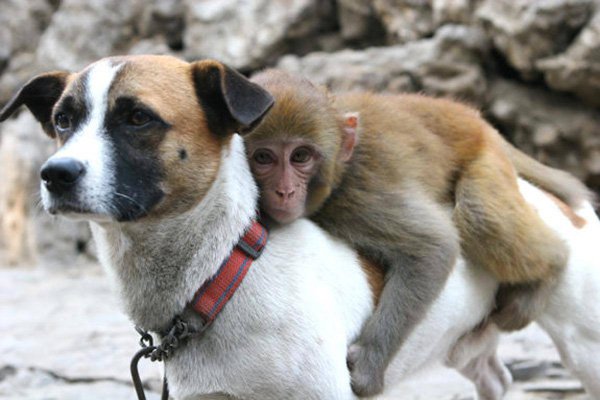
Dog food ingredients have been a popular topic in the news as of late and not for any good reasons. Recent contamination has occurred in a large number of dog foods causing widespread illness and even death in family dogs across the country. The alarming recalls that ensued were quite scary for a large number of dog owners. While this is not the norm, there are a variety of ingredients that dog owners should familiarize themselves with before selecting a dog food. Make sure to check with your Veterinarian to make sure that the food you feed your dog is adequate for his nutritional needs.
According to Veterinarians the average adult dog weighing around 35 pounds needs a minimum of 25 grams of protein and 14 grams of fat per pound of food consumed. They also need a variety of carbohydrates, vitamins, minerals and amino acids. The Food and Drug Administration has set a minimum requirement for some of these ingredients; however, FDA requirements for commercial grade dog foods fall short in some of these areas. Here is a list of the most common ingredients found in dog food:
1. Alpha Meal: Upper portion of the alfalfa plant, free from weeds and mold. The meal is often sun-cured and finely ground. Alfalfa is a legume and therefore a source of vegetarian protein.
2. Animal Digest: Material from clean and un-decomposed animal tissue and is suitable for animal feed.
3. Animal fat: Obtained from the tissues of mammals and poultry and consists of glyceride esters of fatty acids. When combined with an antioxidant it is used as a preservative.
4. Barley: A cereal grain and member of the grass family, barley is a source of carbohydrates.
5. Beef: Muscle meat from slaughtered cattle not to include the tongue, diaphragm, heart or esophagus. Beef is a primary source of protein.
6. Brewer’s Rice: Dried and extracted residue of rice from the manufacture of the liquid portion of malted grain. Brewer’s Rice is missing many of the nutrients found in other forms of rice and is used exclusively in animal feed.
7. Brown Rice: Unpolished rice after the kernels have been removed, a source of carbohydrates.
8. Chicken: Combination of flesh and skin with or without bones excluding feathers, heads, feet and entrails. Chicken is a primary source of protein.
9. Chicken By-Product Meal: Ground, rendered and cleaned parts of the carcasses of slaughtered chickens including neck, feet and undeveloped eggs, another source of protein.
10. Corn Gluten Meal: Dried residue from corn after the extraction of the larger portion of starch and germ, a source of carbohydrates.
11. Dehydrated Eggs: Dried whole poultry eggs, a source of protein.
12. Dried Whey: Product obtained through the removal of water from whey, a source of protein and lactose.
13. Lamb Meal: Rendered product from lamb tissues, a primary source of protein.
14. Poultry Fat (feed grade): Natural fat obtained from rendering or extracting poultry products, contains 90% natural fatty acids.
15. Soybean Hulls: The outer covering of a soybean. These hulls provide dietary fiber and vegetarian protein.
16. Soybean Meal: Obtained from the grinding of the flakes remaining after removal of the oil from de-hulled soybeans.
17. Turkey Meal: The ground combination of turkey flesh and skin with or without bone, excluding feathers, head, feet and entrails, a primary source of protein.
18. Wheat Bran: Coarse outer covering of the wheat kernel separated from the wheat when milled, a source of carbohydrates.
19. Wheat Flour: Fine particles of wheat bran and wheat germ obtained during the milling process, often described as the “tail of the mill” or the sweepings of the leftovers.
20. Wheat Germ Meal: Wheat germ with some bran mixed in, a source of crude protein and fat.
 Are Dog Training Collars Humane And Ective?
Are Dog Training Collars Humane?
With the advent of t
Are Dog Training Collars Humane And Ective?
Are Dog Training Collars Humane?
With the advent of t
 Tips On Feeding Several Cats In A Household
Tips On Feeding S
Tips On Feeding Several Cats In A Household
Tips On Feeding S
 When Cats Need Emergency Veterinary Treatment
When Cats Need Em
When Cats Need Emergency Veterinary Treatment
When Cats Need Em
 Give your birds the perfect protection habitat in chicken coops
Give your birds the perfect protection habitat in chicken
Give your birds the perfect protection habitat in chicken coops
Give your birds the perfect protection habitat in chicken
 What Sort Of Emotions Do Dogs Experience?
What Sort Of Emot
What Sort Of Emotions Do Dogs Experience?
What Sort Of Emot
Copyright © 2005-2016 Pet Information All Rights Reserved
Contact us: www162date@outlook.com